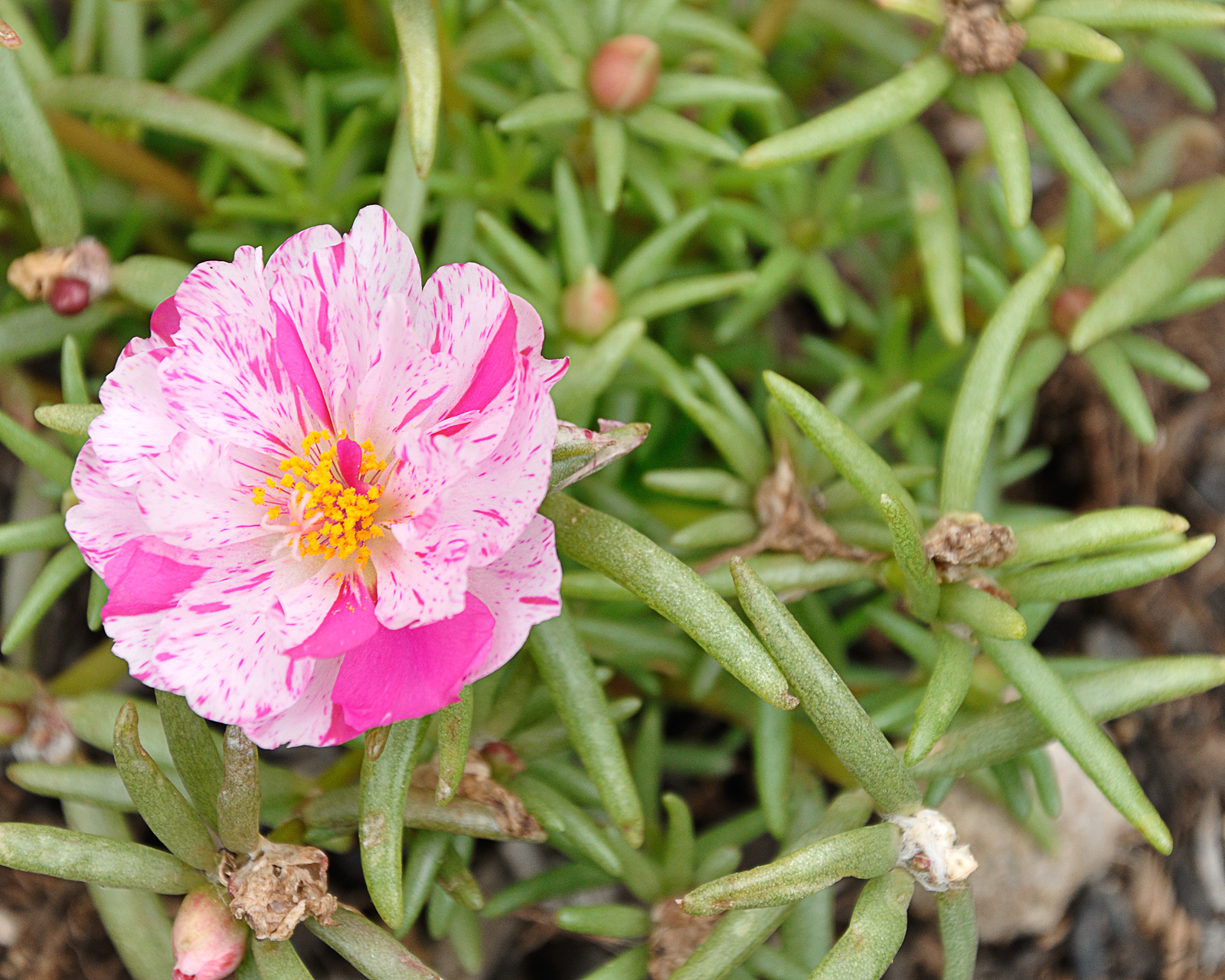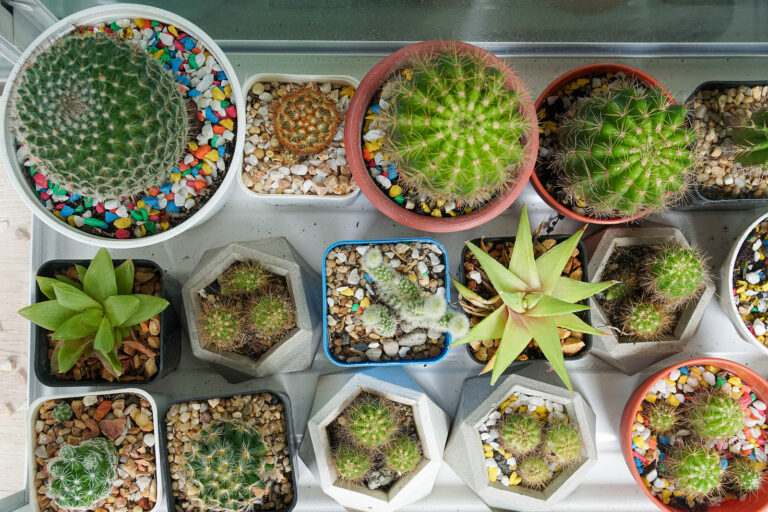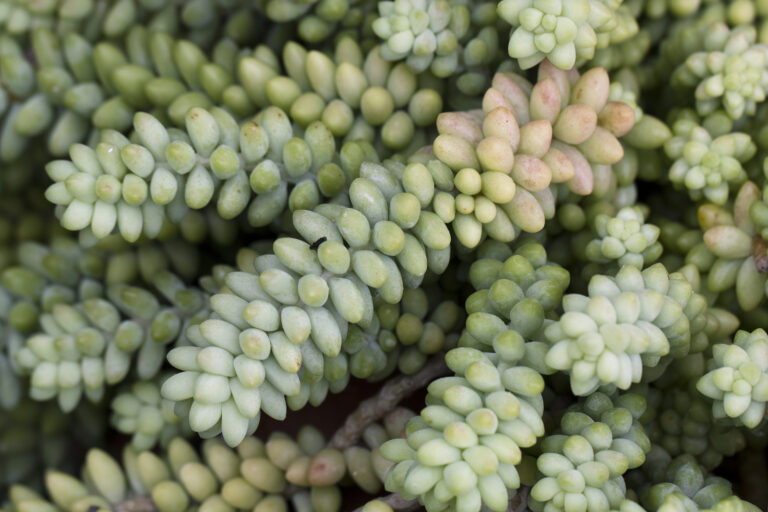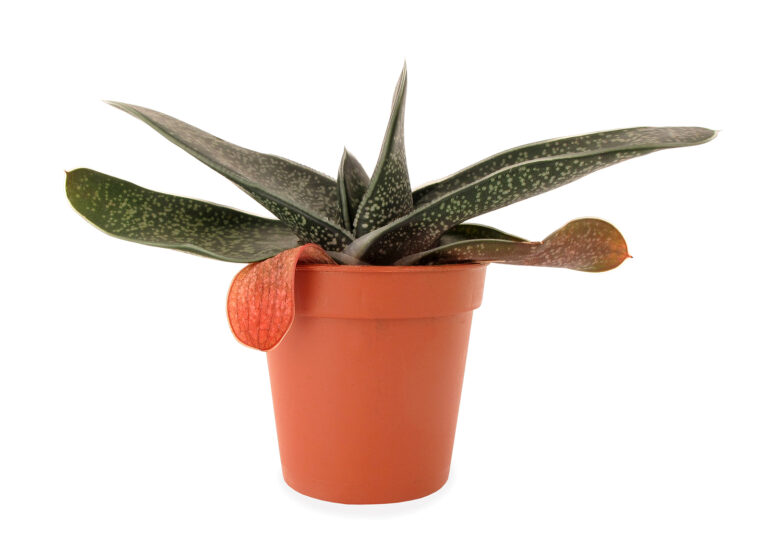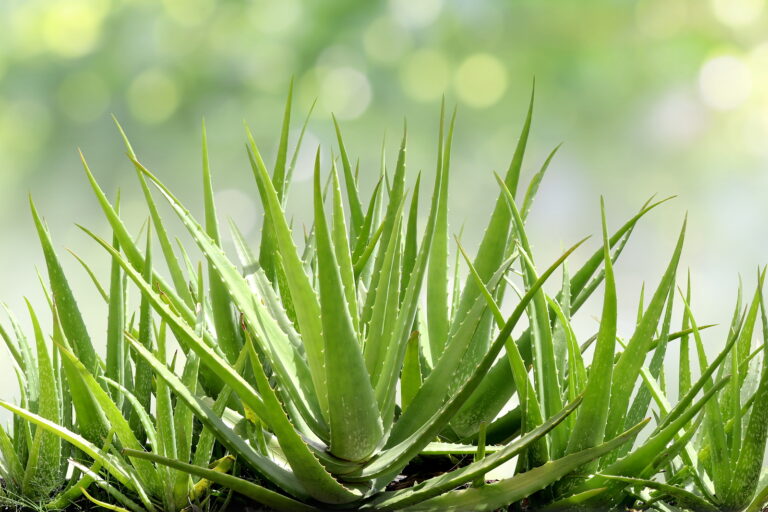How to Grow Mesembryanthemum – Ice Plant
Mesembryanthemum, commonly known as Ice Plant, is a low-growing, succulent plant native to South Africa. It’s admired for its fleshy leaves that often shimmer with a silvery, crystalline sheen, making them appear as if they are covered in ice—hence the common name. Mesembryanthemum is also known for its vibrant, daisy-like flowers that come in various shades, including pink, purple, yellow, orange, and white.
Mesembryanthemum is a genus of plants that belong to the Aizoaceae family. The leaves of Mesembryanthemum plants are small and cylindrical, with a waxy coating to help retain moisture. They fleshy leaves and stems store water, making them well adapted to arid conditions.
The flowers bloom in the summer and are often fragrant. These plants are often used as ground cover in gardens and landscaping, as they are able to spread and create a dense mat of foliage.
Mesembryanthemum prefer full sun and well-draining soil, making them a popular choice for rock gardens and dry, sandy areas. Overall, Mesembryanthemum plants are low-maintenance, drought-tolerant, and beautifully colorful, making them a popular choice for gardeners looking to add some interest to their landscape.
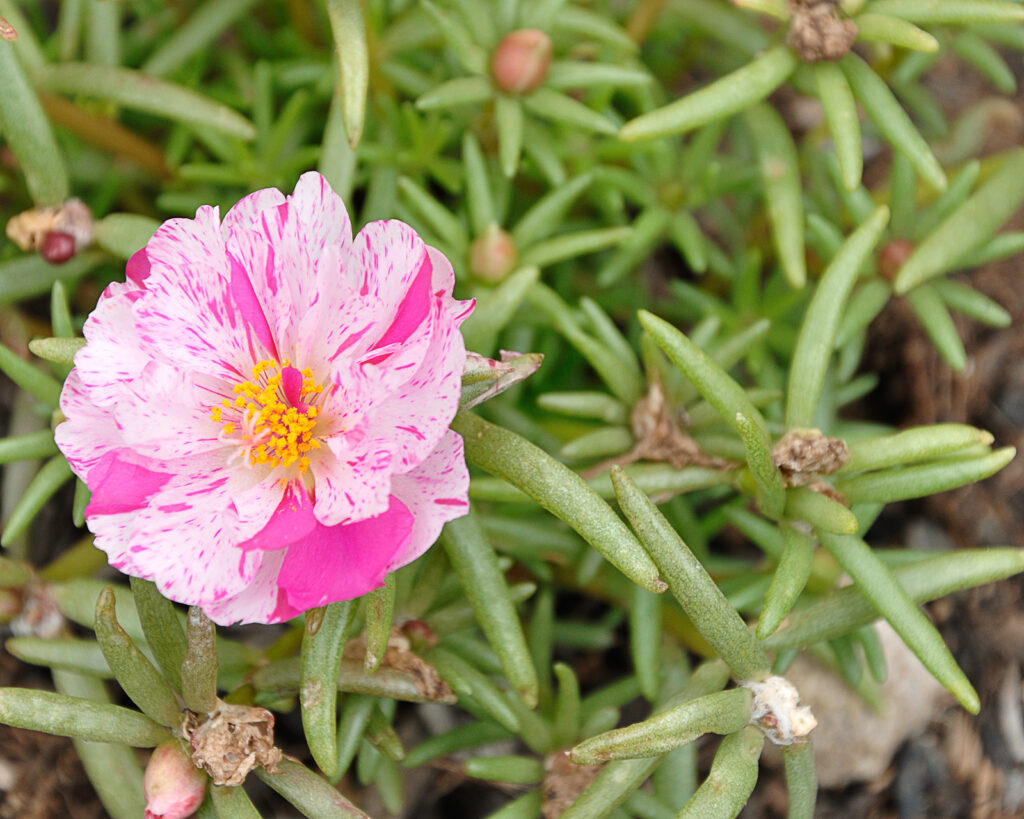
Mesembryanthemum Characteristics
- Height and Spread: Typically grows to about 6 inches tall and can spread up to 2 feet, making it an excellent ground cover.
- Flowers: Its blooms are abundant and usually open in bright sunlight, often staying open during the day and closing at night.
- Foliage: The leaves are thick, succulent, and have a unique shimmering effect.
- Hardiness: Mesembryanthemum is drought-tolerant and thrives in well-drained, sandy soils. It’s generally hardy in USDA zones 8-11, although some species can be treated as annuals in colder climates.
How to Grow Mesembryanthemum:
- Sunlight: Choose a location that receives full sunlight, as this plant thrives in bright, sunny conditions.
- Soil: Ice plants prefer sandy, well-drained soil. They are well-suited to rock gardens, gravel beds, or any area where water doesn’t sit. Avoid heavy, clay-based soils unless they are amended to improve drainage.
- Watering: Once established, Mesembryanthemum is highly drought-tolerant and only needs occasional watering. Be cautious not to overwater, as it can lead to root rot.
- Planting: Sow seeds in spring after the last frost. Lightly press them into the soil surface, as they require light to germinate.
- Progagation: You can also propagate from stem cuttings in early summer, rooting them in well-drained soil.
- Maintenance: Ice plants are low-maintenance. Prune back dead or damaged stems in spring to encourage new growth. No need for heavy fertilization; a light feeding in early spring is sufficient.
Garden Uses of Mesembryanthemum
- Ground Cover: Due to its spreading habit and tolerance for poor soils, Mesembryanthemum makes an excellent ground cover, particularly in rock gardens, dry slopes, or borders.
- Erosion Control: Its ability to spread and hold the soil in place makes it ideal for controlling erosion on slopes.
- Container Planting: It can be planted in containers, where its cascading nature creates a striking effect, especially when placed in sunny patios or balconies.
- Flower Beds: Use it in the front of flower beds where its bright flowers will create a colorful carpet effect.
- Xeriscaping: Given its drought tolerance, it’s perfect for xeriscaping, making it a great addition to a low-water-use garden.
- Attracting Pollinators: The bright, colorful flowers are attractive to bees, butterflies, and other pollinators, enhancing the ecological health of your garden.
Where to Plant Mesembryanthemum
- Mesembryanthemum plants thrive in full sun. Place them in a location where they receive at least 6-8 hours of sunlight per day.
- Mesembryanthemum plants are not frost-tolerant and prefer warm temperatures between 65-75°F (18-24°C). They can tolerate some humidity, but good air circulation is important to prevent rot.
- Mesembryanthemum plants prefer well-draining soil with a slightly acidic pH. You can use a cactus or succulent potting mix or add sand or perlite to improve drainage.
Watering Mesembryanthemum
Water Mesembryanthemum plants sparingly, allowing the soil to dry out between waterings. Overwatering can cause the roots to rot, so it’s best to err on the side of underwatering.
Feeding Mesembryanthemum
- Mesembryanthemum plants do not require frequent fertilization. You can feed them with a diluted succulent fertilizer once or twice a year in the spring and summer.
Pruning Mesembryanthemum
- Deadhead spent flowers to encourage more blooms and prevent the plant from spreading too aggressively.
Mesembryanthemum Propagation
- Mesembryanthemum plants can be propagated from stem cuttings or seeds. Stem cuttings should be allowed to callus before planting in well-draining soil.
Mesembryanthemum Pests and Diseases
- Mesembryanthemum plants are generally pest and disease-resistant, but they can be susceptible to root rot if overwatered. Keep an eye out for mealybugs or aphids and treat them promptly if found.

